Not only are we wrapping up the summer, but September is Skin Care Awareness Month. We of course remind you to remain vigilant about sunscreen, but we also want to help you to start taking even better care of your skin with some of our in-office procedures.
Here are our three favorite ways to improve skin texture and appearance, from least to most invasive:
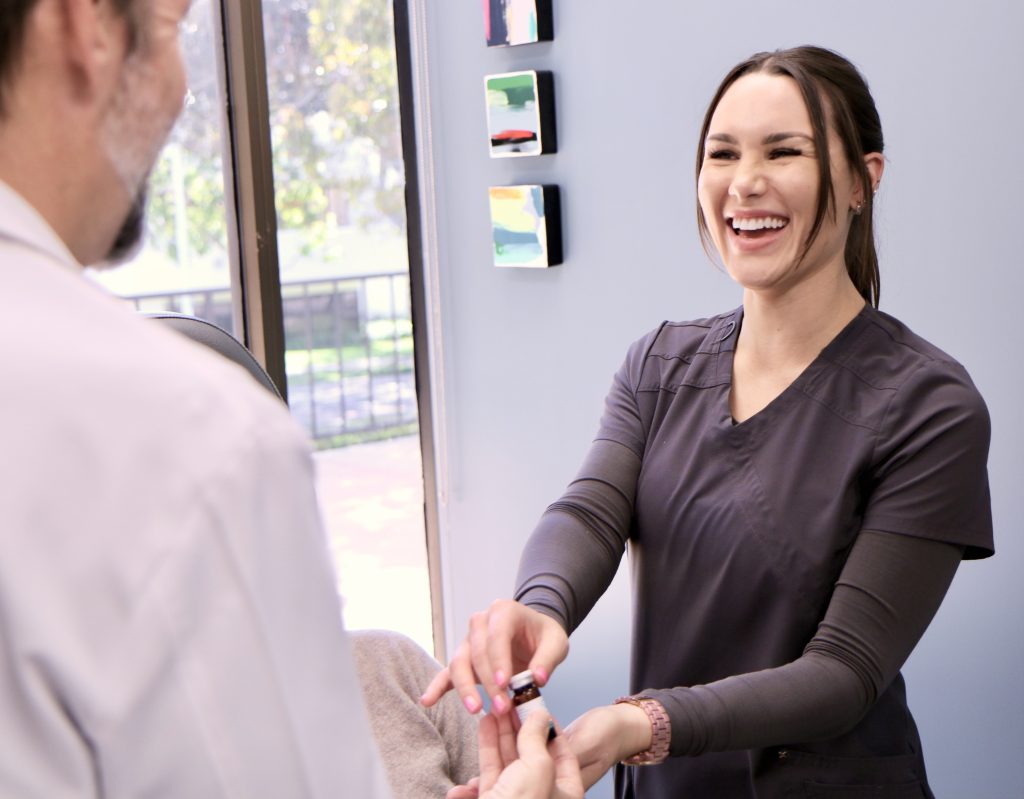
PEEL
Indications: Pigmentation, active acne, sun-damaged skin, fine lines and wrinkles.
How it works: Chemicals penetrate layers of the skin and promote rapid cell turnover and collagen synthesis. It also clears dead skin cells and oils. This helps create brighter, more even, and smoother skin. Select ingredients also work to reduce dark spots or treat active acne lesions. Best results are achieved with a series of peels.
Recovery: You will likely have significant peeling, especially 3-4 days after the peel. Most peeling resolves by about a week.
Cost: Varies by area, $
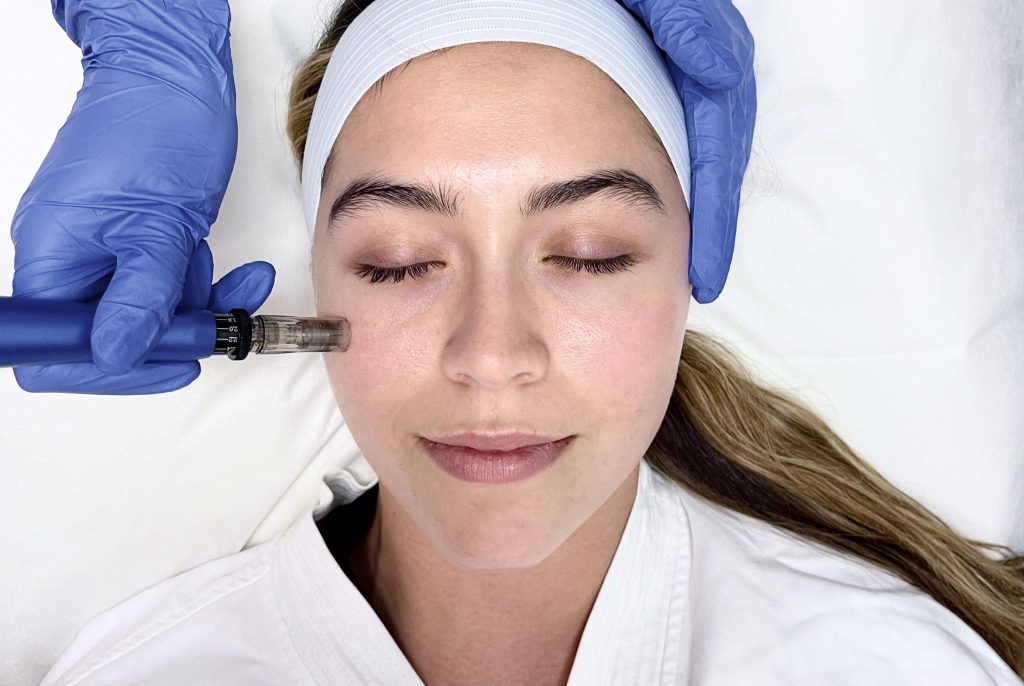
MICRONEEDLING
Indications: Acne scarring, surgical scars, loss of collagen from aging.
How it works: Small needles puncture the superficial layers of the skin, inducing collagen and elastin production. This results in brighter, tighter, and younger looking skin. A growth factor serum is simultaneously infused into the skin punctures, enhancing collagen production.
Recovery: For the first week you will experience redness. Avoid sun exposure for one week after treatment.
Cost: Varies by area, $
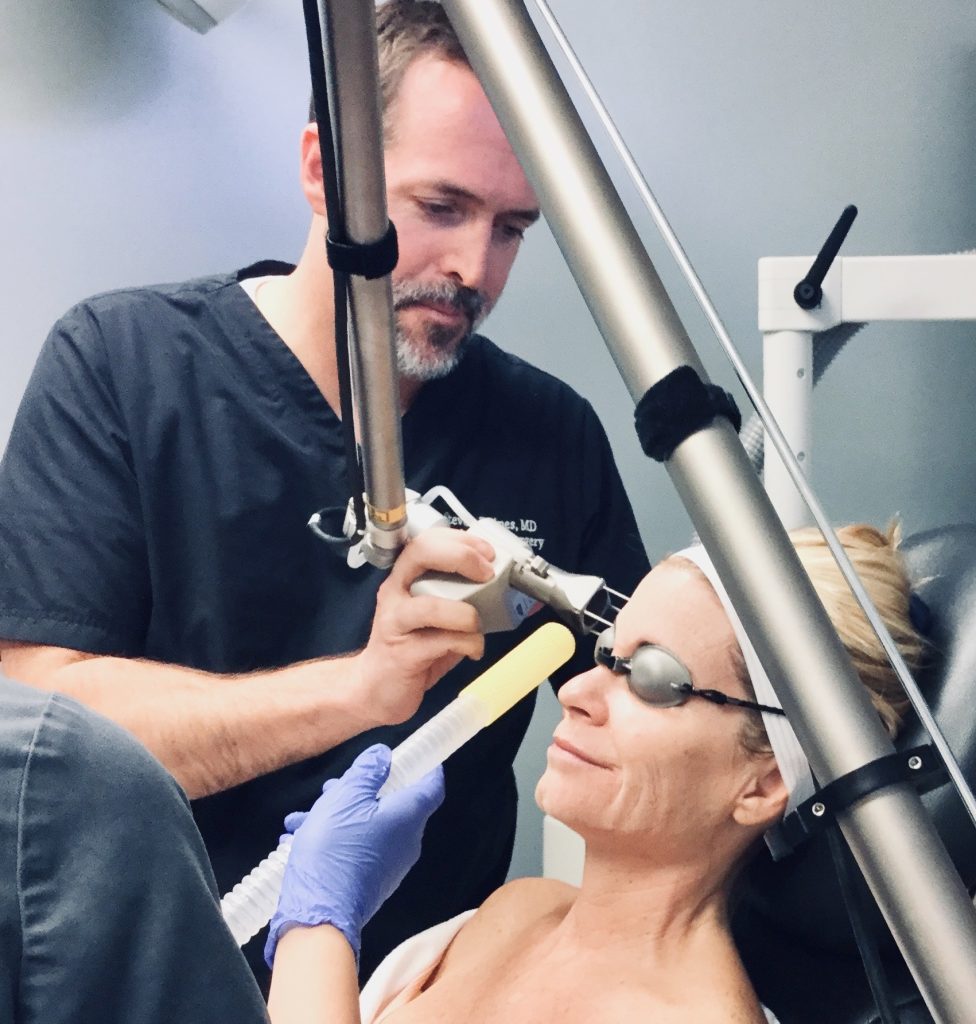
FRACTIONAL CO2 LASER
Indications: Sun-damaged skin, fine lines and wrinkles, acne scars, lighter skin tones.
How it works: Fractional CO2 laser creates micro punctures in the skin while also delivering thermal energy. This removes damaged tissue and stimulates tissue shrinkage while inducing collagen production. Collagen remodeling continues for 3-6 months. Best for lighter skin types not prone to dark spots.
Recovery: This will depend on how aggressive your treatment is. You could have redness for up to a month during healing. Depending on your healing, you may be able to wear makeup after 1 week.
Cost: Varies by area, $$ – $$$
Fine lines, wrinkles, loose skin, and other signs of aging are perfectly natural, and many of us reach a point where we want to “do something.” But what does that mean? After looking into the options, you may be asking, “should I choose fillers or surgery?’
We turn to two of our top physicians with this question.
Simon Madorsky, MD is a Facial Plastic Surgeon.
“Judicious use of filler can really enhance natural features,” assures Dr. Madorsky, “but over time, there can be limited results, as well as a necessity for repeated procedures. They have their place, but cannot replace surgery. They will not remove extra skin or extra fatty tissue.”
“Fillers can be overdone. We are seeing something I call Filler Fatigue. People are getting over-filled and often look unnatural.”
The ideal candidate for facial fillers is someone who has minor to moderate signs of aging on their face. These candidates are usually between 30 and 55, since older people may have significantly loosened skin and the presence of other things like bags under their eyes and jowls, which will not respond well to filler injections.
The ideal candidate for surgery, such as a blepharoplasty or facelift, is someone who has more advanced signs of aging in the face and neck. A surgical procedure can address many more issues than facial filler can. That said, candidates still need to be in good enough overall health to undergo surgery and will need adequate support and downtime to recover from the procedure.
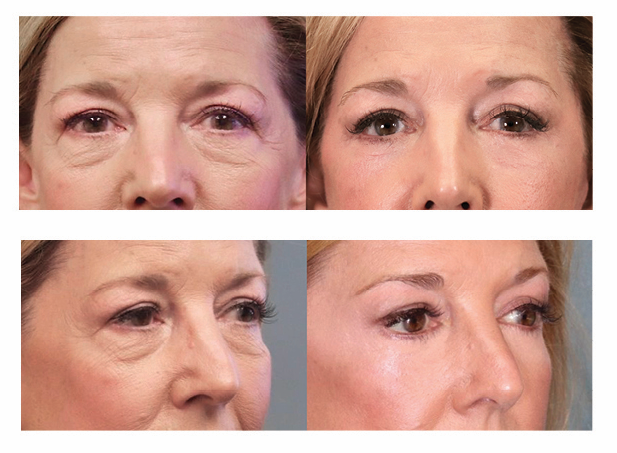
This patient underwent blepharoblasty (evelid surgery). She was advised her that iniectables would have a limited and temporary impact.
Choosing Both Options
Some patients use fillers as a way to “try on” a new face and to helo them decide whether they want to move forward with surgical procedures.
One example of this is the “liquid rhinoplasty,” where the shape of the nose is changed with filler, albeit temporarily. There are also subtle enhancements to the eye area and jawline that can be made with filler and Botox, but don’t have the longevity of a surgical procedure. This is an option worth considering when you talk with your provider.

The fractional CO2 laser creates tiny “columns of thermal destruction” in the skin that stimulate the growth of new, healthy skin cells to replace old, damaged cells. This procedure treats wrinkles, discoloration, sun damage, age spots, and acne scars. Instead of removing skin layers with chemicals, the CO2 laser removes skin layers by vaporization.
During your treatment, one of our physicians will apply the Fractional CO2 laser to the area chosen for resurfacing. The laser will eliminate surface damage, while concurrently heating the underlying tissue, causing it to increase collagen production. Depending on the scope of the treatment area, your laser session may take anywhere from 30 minutes to two hours.
WHAT DOES THE CO2 LASER TREAT?
The Fractional CO2 laser is used to address a wide range of skin conditions, including:
- Fine lines (including around the eyes)
- Deeper wrinkles around the forehead, mouth, or nose
- Sun damaged skin
- Acne scars
- Hyperpigmentation
In addition, the Fractional CO2 laser can be used to treat other visible areas of the body, such as the neck, chest, or hands.
BEFORE & AFTER IMAGES
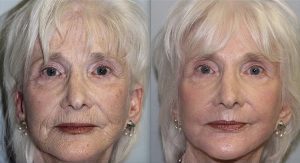
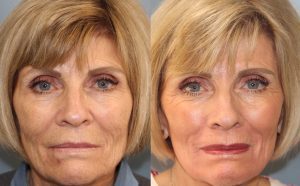
The jawline can be a crucial part of facial aesthetics. A strong jawline in men is often associated with attractiveness and confidence. For women, a jawline can represent youth and beauty.
Allergan (the maker of BOTOX and JUVEDERM) has just released a filler created specifically for the jawline. This long-lasting filler is now available at aesthetic practices for patients over the age of 21 with moderate to severe loss of jawline definition.
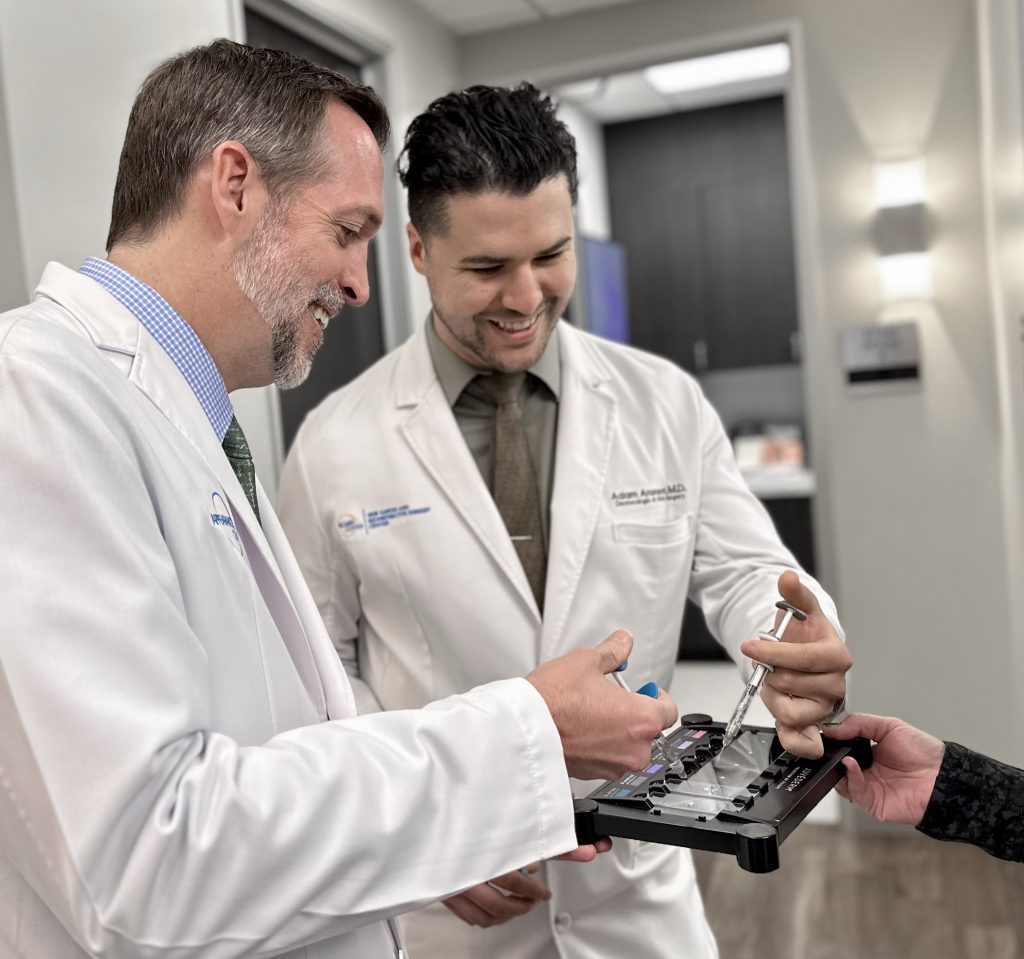
VOLUX is a slightly more cohesive and thicker formula than JUVEDERM VOLUMA. Both of these fillers build volume and create a lift beneath the skin, but while VOLUMA is FDA-approved for the chin and cheeks, VOLUX is FDA-approved to treat the chin and jawline.
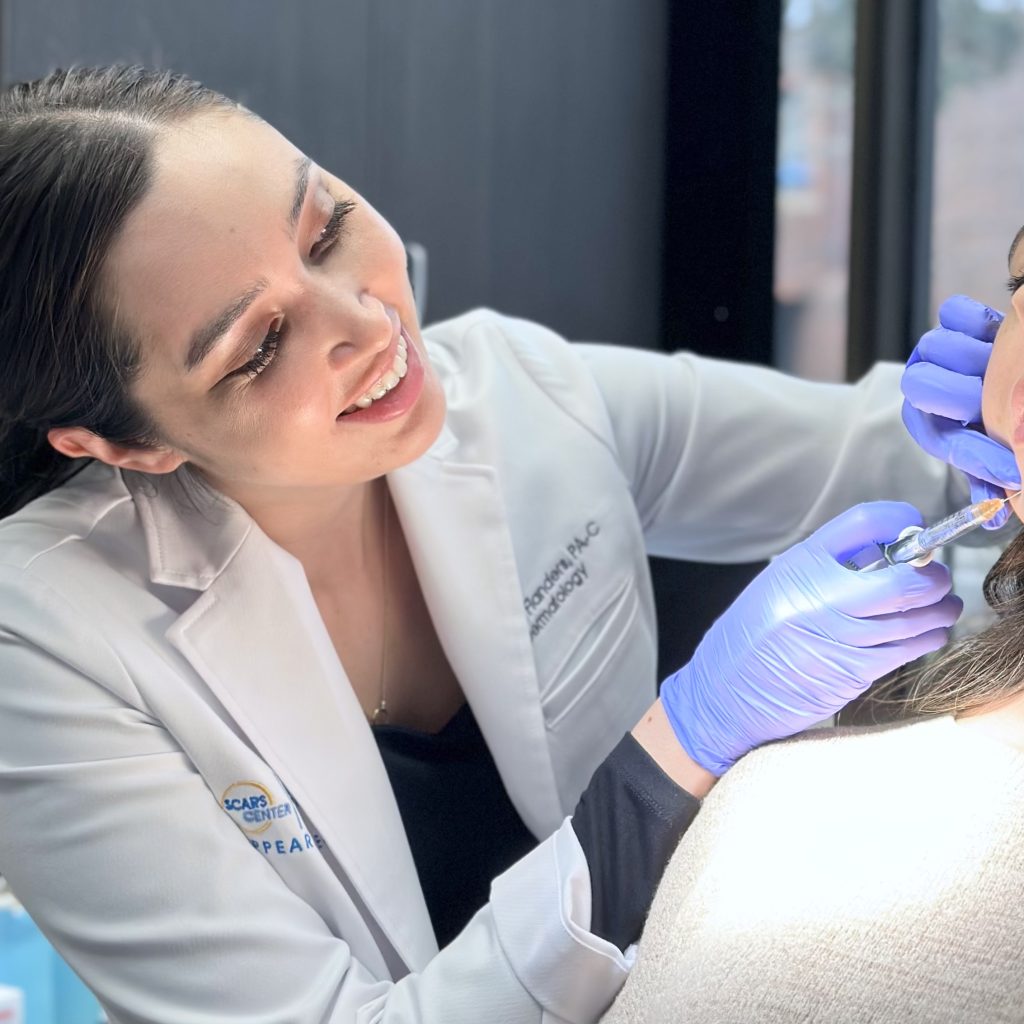
The procedure only takes a few minutes, and any swelling is dramatically improved within 48 hours. Results last between 12 and 18 months.
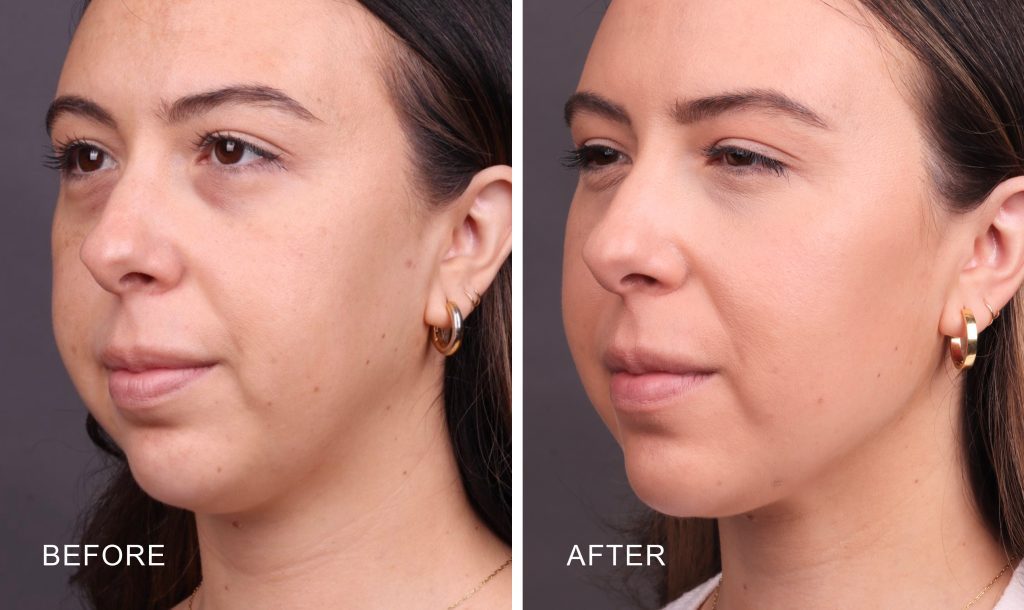
All of our providers are expert injectors and can help you to assess your jawline and other aspects of facial aesthetics. Call us to schedule a consultation.
Dermal fillers, also called injectables, are a safe and effective way to enhance your appearance without the need for invasive surgery or downtime, but results are very dependent on the injector. At the Appearance Center, our providers are highly-trained medical professionals, familiar with the unique anatomy of the face, and have had extensive training and years of experience.
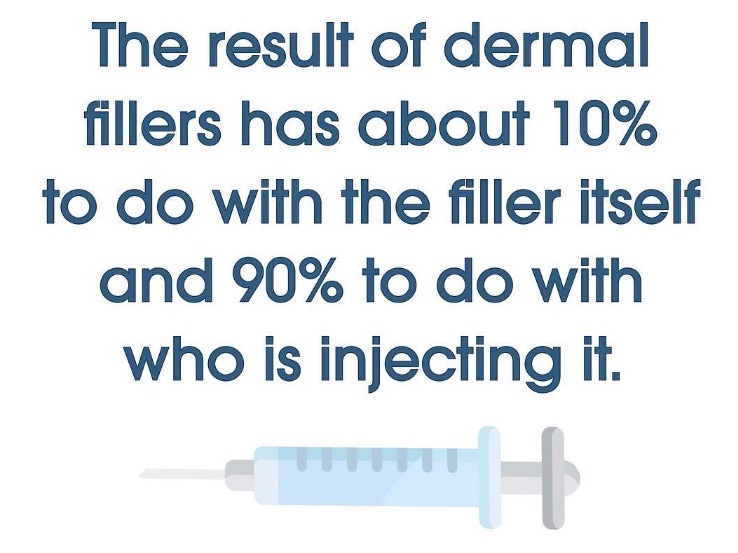
Dermal fillers can be used to address a variety of different cosmetic concerns – restoring lost volume to depleted areas, creating more attractive facial contours, and improving symmetry.
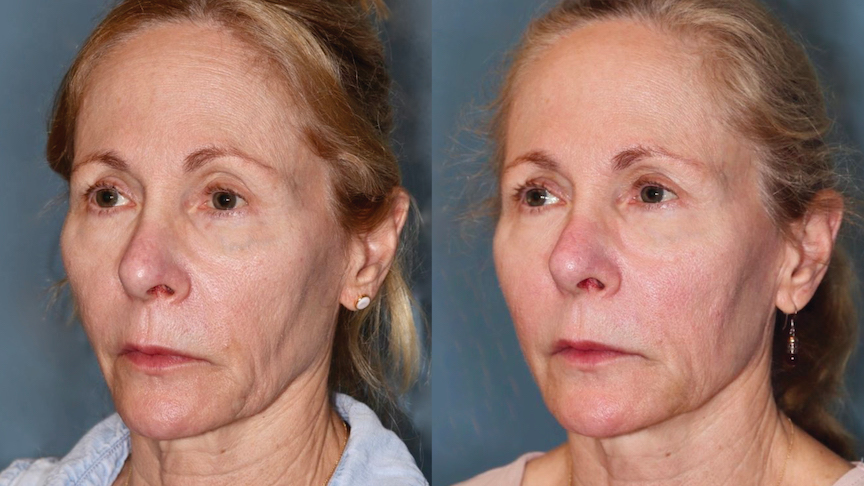
FIGHT THE SIGNS OF AGING
As the skin is subjected to elements over time, the appearance of a face changes. Dermal fillers reverse this by giving a person back the facial volume they may have lost. These fillers can also make the cheeks look more contoured, give a more defined jawline, and overall make a patient look refreshed.
One of the great things about dermal fillers is that virtually no recovery time is required. After their treatment session, patients can usually return to most activities right away.
More good news: The results of dermal fillers are not permanent. If you don’t love your results from dermal filler injections, take heart knowing the effects are temporary.
Filler technology enables results to last six to 18 months although there is variation between individuals, as well as according to the type, quantity and depth of the dermal filler placed within your skin.
In many cases, a skilled cosmetic eye can make more immediate corrections or improve upon your previous results. Our providers are also experienced with correcting over-filling or wrong-site filling done at other locations.
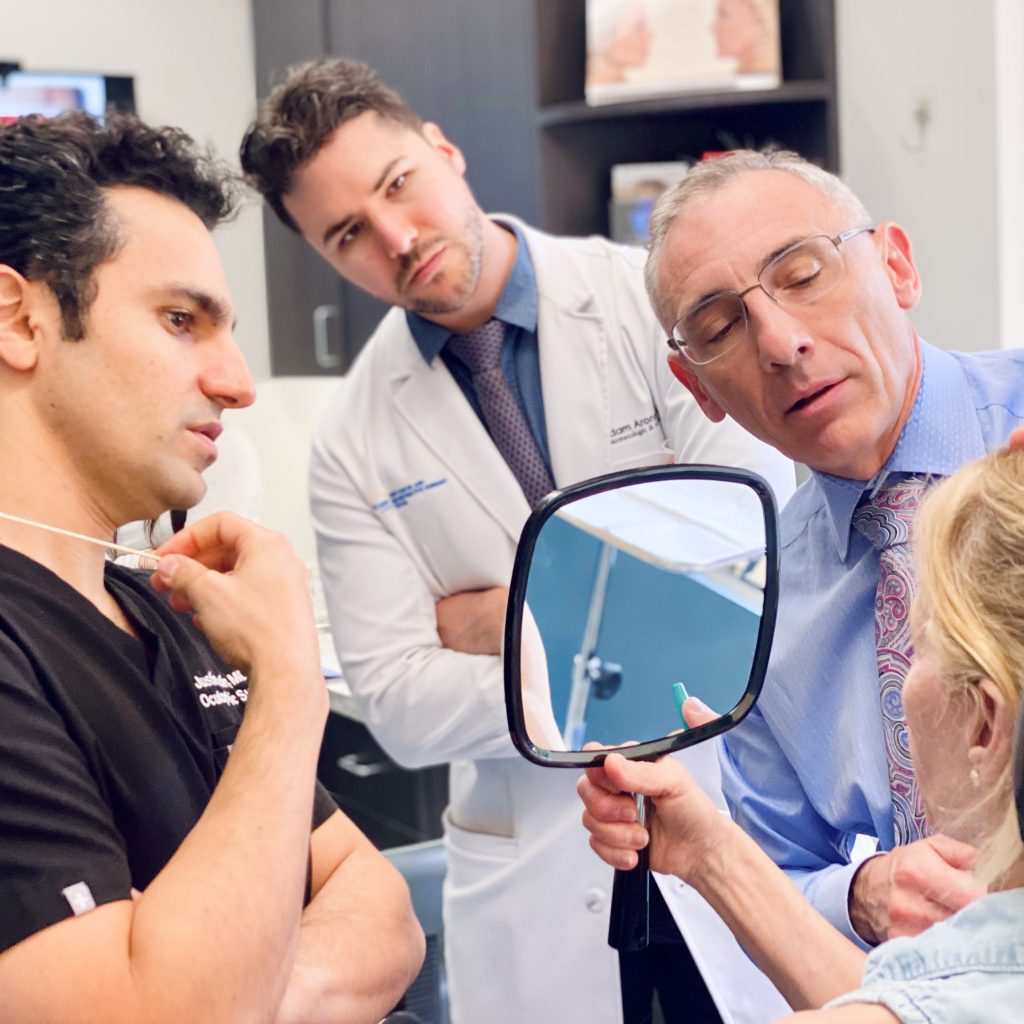
“I just want to look “x” years younger” is a common request in the dermatology or plastic surgery office. One way to accomplish that is to restore facial volume. Most of us may not initially recognize volume loss in our face because we see ourselves everyday. But the changes become stark when we look at old photographs. Restoring volume is an important and common approach to helping patients achieve the results they desire.
Hyaluronic acid injections, commonly known as “fillers,” are a popular way to increase facial volume. Injectable filler is relatively quick to perform, has minimal downtime, and provides immediate results. The main downside of filler is that the results are temporary, typically lasting between 6 and 18 months.
A more permanent way to increase volume is fat transfer. Fat is usually collected from the abdomen and strategically injected into areas of the face. It requires from 1 to 3 separate injections spaced 6 weeks apart to achieve results. Fat integrates well and the results last, which probably sounds great. But is there a catch?
Potentially. An important consideration of fat grafting is that the fat acts like the donor site (abdomen), not the recipient site (face). While people lose weight and volume in their face as they age, they often gain weight in other areas, including the abdomen. As a result, if the patient gains weight over time, the fat in the face will grow too. A well qualified doctor or PA will be able to make the appropriate judgment regarding the volume of fat appropriate to inject.
Because of fat’s potential to grow, the best candidates for fat transfer tend to be older patients, of stable weight, and if applicable, post-menopausal. Otherwise, filler is a great option to add volume and can be tailored as the patient ages.
Bruising is common after surgery and filler injections. It usually peaks around 48 hours after intervention and then slowly resolves over 10 days. While most patients expect bruising after surgery, it is less accepted by patients after minimally invasive treatments such as filler.
Bruising from filler can be minimized by injecting with a cannula instead of a needle. Cannulas have blunt ends (unlike a needle which is sharp) and cause less trauma during the injection. Because there is less trauma, there is usually minimal, if any, bruising. However, some areas are likely to bruise because of anatomical reasons, even with the cannula technique.
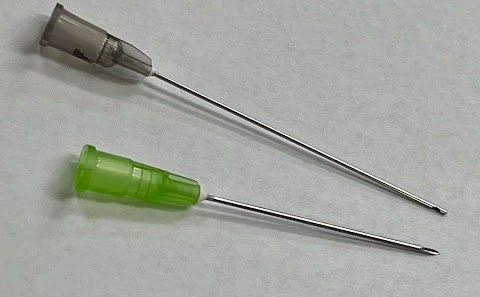
At the Appearance Center, bruising can be promptly treated with VBeam. Our V-beam pulsed dye laser has been extremely effective at eliminating early bruising. It is typically performed 24-48 hours after initial treatment (ie filler or surgery), and significantly reduces the bruise within 24 hours. In the event of significant bruising, we are pleased to offer complimentary v-beam treatment. As a result, patients can enjoy their results, bruise-free, as quickly as possible.
Fun fact: Whether the bruise is from a procedure or just an accidental trauma, the v-beam can speed up the recovery and get you looking good to go!

Acne is caused by a variety of factors. These factors include increased p. acnes bacteria, increased oil production by oil glands, “clogged pores,” genetic susceptibility, and increased androgen hormones. It is important to target multiple causes of acne to best control it. There are many “tried and true” options and some newer and less well known treatment options.
Initial treatment options for mild to moderate acne focus on consistent application of topical products.
Face washes should contain an active ingredient against acne. Examples include benzoyl peroxide and salicylic acid. After washing the face, topical retinoids are used. Prescription retinoids such as retin-A and tretinoin increase cell turnover and prevent “clogged pores.” Retinoids work best against comedonal acne which refers to whitehead and blackhead acne. Retinoids are a staple of acne management and are also a popular anti-aging product as they improve skin texture and fine lines.
Antibiotics are another cornerstone of acne management- especially inflammatory acne. Inflammatory acne usually appears as red bumps or nodules. Topical and oral antibiotics reduce p. acnes bacteria and reduce inflammation leading to acne lesions. These are usually used in conjunction with topical retinoids.
Hormones contribute to acne because androgens stimulate the oil glands to produce more oil. Oil rich environments allow p. acne bacteria to thrive and cause more acne breakouts. Females who break out during their menstrual cycle or primarily have bumps and nodules along their jawline often respond to hormonal therapies including oral contraceptives and oral spironolactone. Unfortunately, these options are not available to males. However, a new drug, Winlevi, offers a topical antiandrogen option for both males and females.
The ultimate acne treatment is isotretinoin, previously known by a brand name, “Accutane.” Some patients may be nervous about isotretinoin because it is highly regulated due to causing birth defects in pregnant women. However, it is usually well tolerated and is extremely effective at eliminating active acne. Isotretinoin is also the only medication shown to cause long term remission of acne.
The above options can control acne well, but it can be frustrating when there are breakthrough lesions. Some additional options for breakthrough lesions include chemical TCA peels (VIPeels), vascular laser (V-beam laser) treatments, and steroid (kenalog) injections.
VIPeels are a chemical peel that include anti-acne ingredients such as salicylic acid and benzoyl peroxide to promote cell turnover and reduce inflammation and hydroquinone to lighten acne scarring.
V-beam and Kenalog can be used to spot treat a stubborn or inflamed lesion. V-beam is a laser that delivers energy to kill active acne bacteria or treat red scars left behind by previous acne lesions. Kenalog is a steroid that is injected directly into an acne lesion to reduce inflammation. Kenalog is especially useful before a big event because it works quickly, usually reducing a lesion within 24-48 hours. Kenalog is also useful to treat hypertrophic or keloid scars from cystic acne.
With so many options available, it is important to meet with a provider to discuss which option(s) are best for you.
When it comes to hyaluronic acid injectables (more commonly known as fillers), we tend to focus on areas of volume loss such as the cheeks, under eyes, and lips. The chin is often ignored but can be a great candidate for filler augmentation.
There are several benefits of chin filler including:
- Correction of under-projected chin
- Creating a stronger jawline in men
- Disguising the jowls
- Smoothing of chin dimpling
Chin filler is great for men and women and can be injected into different areas to maintain and/or enhance masculinity and femininity in patients.
The amount of filler needed depends on the chin projection deficit as well as the goal of treatment but can typically range from one to three syringes. Results can last up to two years depending on the type of filler needed.
In the particular patient above, two syringes of Restylane Defyne were used to achieve these beautiful results.
Talk with your provider today to see if chin filler is the right choice for you.
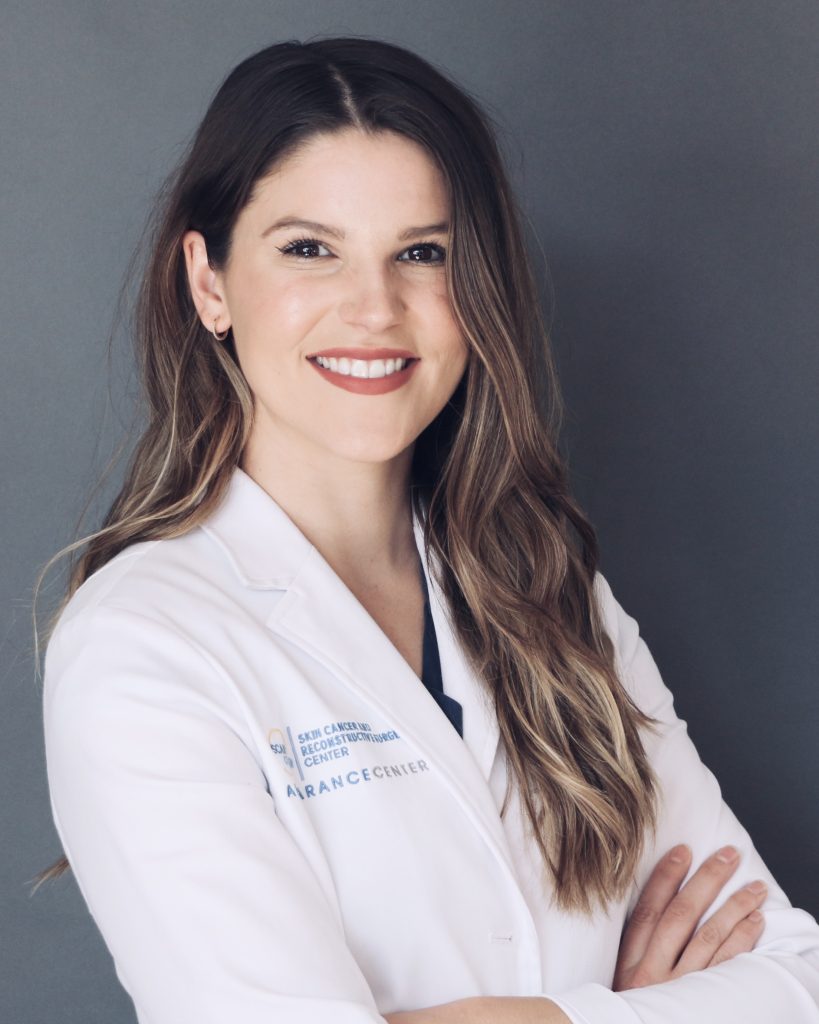
The young woman seen in photos came to our Physician Assistant Shea for a non-surgical chin augmentation. Shea injected her with Restylane Defyne, which is FDA-approved for chin augmentation and correction. This subtle enhancement has huge impact, bringing her face into balance.
“Restylane Defyne is a great alternative for those who prefer nonsurgical treatment options for chin enhancement, or who want to get a glimpse into what a chin augmentation would look like,” says Shea.
| Microneedling is a minimally-invasive cosmetic procedure with a short treatment time, minimal downtime, and noticeable improvement within a few days. It is also cost efficient while still providing long-lasting results. It is performed with a hand-held device containing a tip with very tiny needles. This creates micro wounds in the skin, which help to increase the production of collagen and other healing factors. This results in beautifully refreshed skin, smaller pores, a reduction of fine lines and wrinkles, and a more even skin tone. |
| Some of the most common benefits that our patients experience include: • Tighter, lifted skin due to collagen production • Minimized pores • Improvement with fine lines and wrinkles • Reduction of acne scars • Reduction of surgical scarring and stretch marks Microneedling is safe on almost all skin types. To maintain the results of your treatment, you may need multiple sessions and perhaps other complementing treatments. We can advise you on the best plan of action based on your individual goals. |
